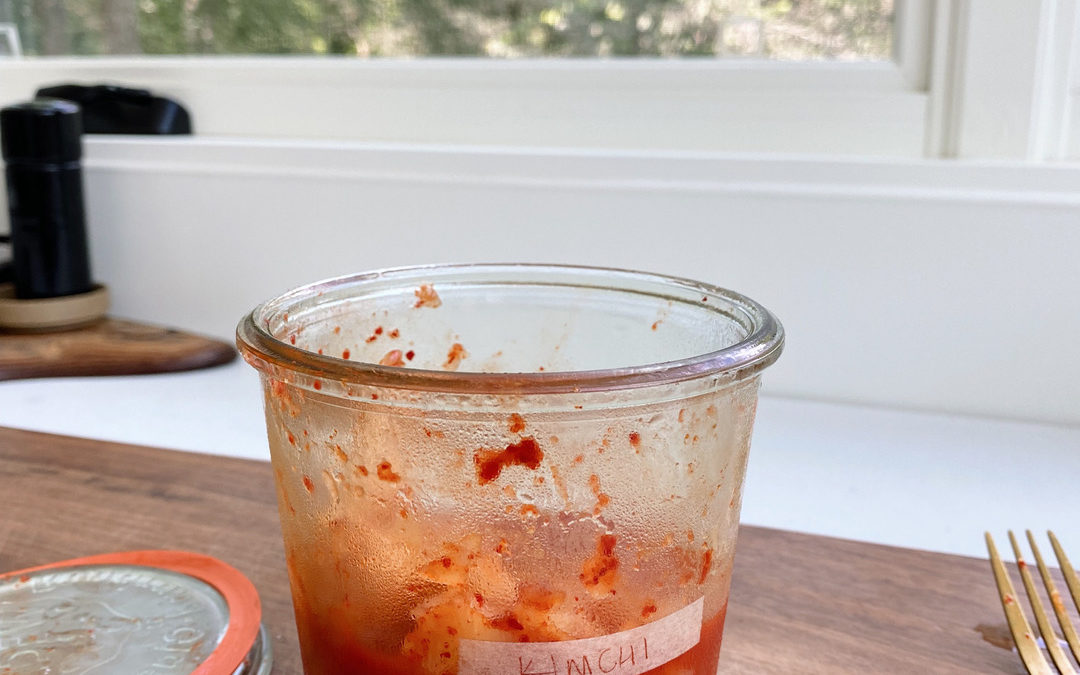Use This Mindful Eating Exercise to Bring Awareness to Your Eating Patterns
Use this mindful eating exercise to compassionately explore your current eating habits and what is and is not working for you.
Do you ever feel like nourishing yourself well still doesn’t come fully naturally and consistently for you?
- Maybe you notice you’re always hungry or have strong cravings.
- Or maybe you know you can’t stop snacking in the afternoon.
- Or that you feel tired and sluggish all day.
But, what you can’t seem to figure out is how to pinpoint exactly what’s causing truly causing these feelings and behaviors.
When you’re don’t have the clarity on exactly what’s causing your block or challenge you’re not able to explore possible solutions and better actions to support yourself.
The first step when you’re noticing you’re struggling with your eating habits or you want to improve them in some way is to practice this mindful eating exercise that will help you develop more awareness around your eating behaviors so you have more clarity on the type of support you need.
These insights can help you uncover where you may need more supportive practices or what’s working really well that you can expand upon, so you can feel fully confident in what’s best for you.
How This Exercise Will Support You
You may be wondering, what exactly will this exercise help me do?
Here’s an example from one of our members of the Mindful Nutrition Method™ program, Kelsey.
At the time, Kelsey was a busy law student, studying for exams, balancing part-time work, an internship and free-time.
After doing this exercise, she realized that one thing that was really impacting her day was that she was hardly eating due to stress and being so focused while studying.
When she went to the library, she wouldn’t have food with her unless it was a quick protein-bar and she realized she was going hours without eating. By the time she got home in the evenings, she felt uncomfortably hungry and that lead her to overeat and have stronger cravings for less nourishing foods.
Using these insights, she was able to then use the tools and practices we teach her to compassionately address the eating patterns that weren’t supportive for her and create the right mindful eating habits for her needs.
Bringing awareness to your eating behaviors is so important to uncover the best actions, practices, tools, and support you need to embody what you’d like to be experiencing with food.
How to Use This Mindful Eating Exercise
This is an exercise in, what I call, Compassionate Curiosity. It’s designed to help you get curious about why something may be while remaining compassionate and non-judgemental with yourself.
The most important thing to keep in mind as you work through this exercise is to practice non-judgment. There is no “good” or “bad” or “right” or “wrong”. The purpose is to simply bring awareness to your current habits so you can better support yourself — no shame, guilt, or self-condemnation necessary.
It may be helpful for you to journal out the answers to these questions for 5 to 7 days, that way you can look back on the week as a whole and look for patterns.
1. Why Did You Eat?
The first question to explore is why did you eat?
Many times, we eat because we’re hungry and we can feel the physical hunger in our bodies.
At the same time, we often eat for other reasons because so many different factors influence our food choices.
For example, you may find yourself eating because you’re stressed or bored. You might also eat if you’re in a social situation that’s centered around food. Or it could be because you see something in your environment (like snacks out on the counter) that triggers you to reach for that food, even if you’re not physically hungry.
There are so many different reasons for why you ate, and none of them are right or wrong. Yes, we want our physical hunger to guide our choices, but what’s more important is that you’re making an intentional choice.
If you just had dinner but you’d like dessert because you’re celebrating someone’s birthday, you may not be physically hungry. That doesn’t mean you shouldn’t have the cake, but you are making an intentional choice to have the cake because you’re celebrating rather than unintentionally choosing to have cake when you don’t truly want it.
2. What Did You Eat?
The next question to reflect on is what you ate. Now, this should not be tracking calories or measuring out specific serving sizes here.
What you’re looking for is simply to bring awareness to the types of foods you ate to see if you were able to get the nourishment you need. This will also show if you were able to practice balance throughout your day by highlighting if you also had foods that you enjoy, even if they aren’t nutrient-dense.
The goal isn’t clean eating, but rather finding a balance.
3. Why Did You Choose to Eat What You Did?
Next, ask yourself why you made the food choices you did make.
Did you make those choices because you need nourishment? Or because you really enjoy them? Did an old rule from the diet you’ve tried influence you in any way?
Here’s a couple of examples:
- You may notice that you were making lunch and you wanted something nourishing so you felt energized throughout the afternoon and into the evening. So you chose to make a nourish bowl with plenty of greens, quinoa, tofu, veggies, and your favorite dressing.
- Maybe you ate a frozen meal for dinner because you were exhausted from the day and you didn’t really feel like cooking
- Or maybe you were really craving pasta for dinner but decided against it because you heard that you shouldn’t eat carbs in the evening.
These will all sound different at each meal, so explore what truly guided your food choices and notice what’s influencing you.
It could be old food rules from diets, it could be your mood or energy level, it could be a lack of time or lack of inspiration for what to make. See what comes up for you.
4. How Did You Feel?
Next, reflect on how you felt after eating.
Notice the physical sensations in your body.
- Did you feel satisfied or were you hungry an hour later?
- Did you eat too much and feel uncomfortably full?
- Did anything you eat upset your stomach or lead you to feel low in energy?
- Did you enjoy what you ate?
- Did you feel guilty after eating what you did?
Starting to notice how what feels really great for your unique body and what doesn’t feel great for you, will allow you to feel more confident in making choices for yourself.
5. When Did You Eat?
The next aspect to reflect on during this mindful eating exercise is when you ate.
Noticing the different times of day you eat can help uncover patterns, such as how filling a meal is or if you’re always hungry at a certain time of day, or if you’re more prone to eating out of boredom or stress (or other factors) during a particular time of day.
6. Where Did You Eat?
Where you ate is another important factor to explore.
While life isn’t always perfect and there are going to be times when you simply can’t sit down to eat at the table, noticing where you’re eating most often and how to impacts your choices will give you some insights into your habits.
7. How Did You Eat?
And finally, what adjectives would you use to describe how you ate at that meal?
Were you slow and conscious? Rushed? Distracted?
Again, nothing is perfect and it’s not always possible to be in a fully slow and present mindset while you eat, however, if you notice you’re eating in a way that doesn’t feel fully present most often, you can begin exploring ways to add a little more mindfulness so you can experience your meal.
What to Reflect on After Mindful Eating Exercise
After you’ve tried this mindful eating exercise for a few days, go through your journal and start to look for patterns.
Maybe you notice you eat breakfast at 9 a.m., but by 10 a.m. you’re usually hungry again. That’s a sign that you may need a more filling breakfast.
Or maybe you notice that whenever you are around sweets, you feel out of control and tend to overindulge. That’s likely a sign that you’ve been too restrictive and you may need to practice more balance.
Uncovering the patterns in your eating behaviors is the first step, but it will take time, patience, guidance and support to know exactly how to address these patterns and create new more supportive eating habits.
That’s exactly what we’re here for. When you’re ready to embody balance and consistency with your eating patterns, you can watch our free workshop that will bring you through the Mindful Nutrition Method™ that will support you in achieving that.








